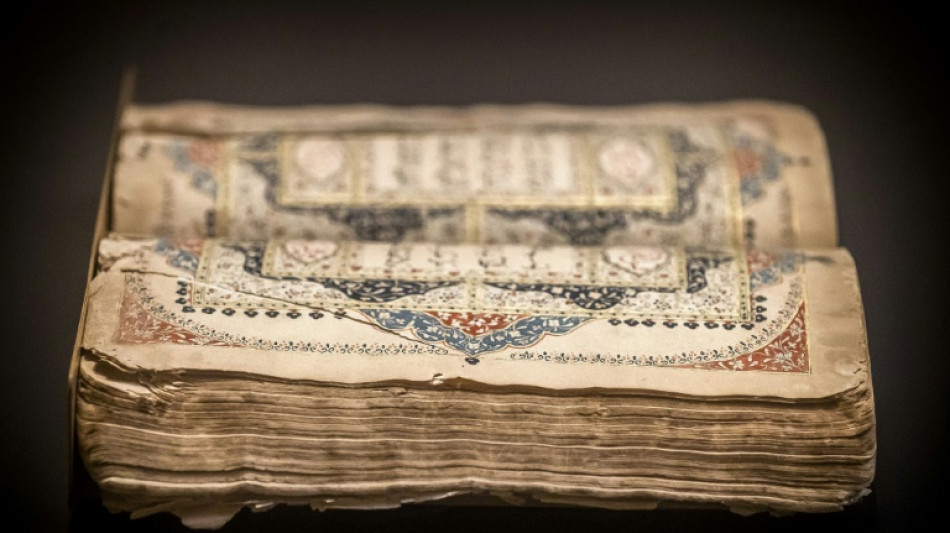

Dutch museum grapples with history of Indonesian independence
A bullet-torn shirt and photos of freedom fighters are among the exhibits documenting Indonesia's struggle for independence from the Dutch in a groundbreaking show at Amsterdam's Rijksmuseum.
"Revolusi! Indonesia Independent", which opens to the public on Friday, is designed to "open a discussion" on a troubled era between the Netherlands and one of its most prized colonies, organisers say.
The aim is to examine from both Indonesian and Dutch perspectives the southeast Asia country's fight for freedom, from declaring its independence in August 1945 to Dutch recognition in 1949 after four years of bloody fighting.
"We really wanted to tell these personal stories that give fragments of this very important time," Rijksmuseum director Taco Dibbits told AFP at a preview.
"We wanted to show this and open a discussion about it."
- Bullet-ridden shirt -
The exhibition features objects belonging to 23 eyewitnesses of Indonesia's independence struggle.
One poignant exhibit is a bullet-ridden shirt that belonged to Tjokorda Rai Pudak, a 42-year-old Indonesian independence fighter who was shot dead on October 9, 1946, a day after he was arrested by Balinese militia supported by Dutch troops.
Another is the small watercolour paintings of Mohammad Toha, 11 at the time, who documented the landing of Dutch colonial forces in the Javanese city of Yogyakarta in December 1948.
The aquarelle paintings, tiny so that they could not be found, show Dutch bombers over the city, Dutch paratroopers landing and victims at a funeral.
Also on show is a morning coat made by Dutch woman Jeanne Van Leur-de Loos out of silk maps used by the British army.
"The more you tell these stories, the closer you get to the past," said Bonnie Triyana, Indonesian historian and guest curator of the exhibition.
- Tender subject -
In recent years the Netherlands has finally started to grapple with the legacy of its history of colonialism.
The Rijksmuseum last year held an exhibition on the Dutch history of slavery.
But the three-century Dutch occupation of Indonesia, once known as the Dutch East Indies, in particular remains a tender subject in the Netherlands.
Last month a group representing victims of Dutch colonialism laid charges against the Rijksmuseum and its director for a term used in the exhibit.
The word "bersiap" -- meaning "be prepared" -- is used in the Netherlands to refer to the time just after World War II when Dutch citizens, Chinese and others suspected of sympathising with the colonial forces were being targeted by independence forces.
The group said it was a "racist and insulting term", used to marginalise a group of citizens of Dutch-Indonesian descent.
Dutch prosecutors however on Wednesday quashed the charges, saying the term "does not contain any negative conclusions about Indonesians as a group because of their race".
Dutch King Willem-Alexander formally apologised in 2020 for "excessive violence" during the former colony's independence struggle.
Museum director Dibbits said there was a "lot of emotion" around the issue.
"Many people suffered greatly under the extreme violence during the revolution and this pain is still felt today," said Dibbits.
"It's very good that this subject is now discussed."
"Revolusi! Indonesia Independent" runs until June 5, 2022.
李-X.Lee Li--THT-士蔑報




